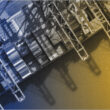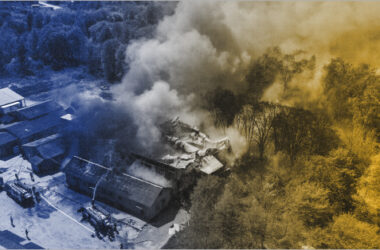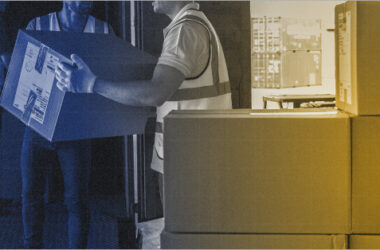Are you making use of machines for running your business?
Does your business have assembly lines of machines for production?
Then you have landed on the right space. Here we will discuss an interesting insurance product for manufacturers like you. Yes, we are discussing machinery loss of profit insurance or MLOP Insurance. It covers physical loss or damage to machinery resulting from unanticipated and accidental events.
Machinery Loss of Profit Insurance: Let’s Understand in Detail
MLOP insurance policies cover more than just physical damage to machinery, but also the financial losses resulting from the breakdown of machinery. It also covers the extra expenses a business may have to incur in order to quickly resume operations after a machine breakdown. These costs include temporary accommodations, overtime wages, and expedited repairs. This insurance is intended to protect a company’s gross profit margins by reducing turnover (due to decreased production) as well as increasing costs (due to expedited repairs and alternative arrangements). When machinery malfunctions, a Machinery Loss of Profit Insurance policy provides financial security.
Characteristics of Machinery Loss of Profit Insurance Policy
- Insurance for Machinery Breakdown is usually purchased in conjunction with this policy
- When the machinery is repaired, insurance coverage typically continues during an indemnity period, during which the policy continues to cover the residual effects of the breakdown.
- As opposed to property insurance, MLOP insurance covers indirect financial losses or consequential losses associated with a breakdown.
- In the aftermath of machinery breakdowns, MLOP insurance covers additional costs of working
- Insured projects can customize their MLOP policies to suit their specific needs.
- Businesses can continue their operations and maintain financial stability after a breakdown of machinery by purchasing this insurance.
Who Needs the Machinery Loss of Profit Insurance Policy?
The MLOP Insurance Policy is relevant and beneficial to a wide range of businesses across a variety of industries. Following is a list of some businesses that could benefit from this policy.
- Construction firms
- Manufacturing firms
- Energy and power industry
- Automotive manufacturing
- Textile industries
- Mining operations
- Technology companies that produce electronic goods and components
What Are The Reasons Why You Need a Loss of Profit Policy for Machinery?
Whenever critical machinery fails (for example, boilers or pressure vessels) in any industrial or manufacturing facility, revenue streams can be jeopardized. In the event of such unforeseen losses, you can acquire a Machinery Loss of Profit Insurance Policy to protect your business. This insurance policy can cover income lost during such disruptions, ensuring that its financial obligations are met.
When your business’s machinery breaks down, you may need to find alternative equipment or machinery to keep your operations running. In addition to covering the costs of repairing or replacing damaged equipment, this policy also covers related expenses, such as expedited repairs and temporary rentals. By covering these increased expenses, the policy helps your business maintain operational efficiency.
When one part of the supply chain is disrupted due to machinery breakdown, suppliers and customers may face delays. The Machinery Loss of Profit insurance provides a means of mitigating these ripple effects. Furthermore, having an MLOP policy in place demonstrates your commitment to risk management. Customers, suppliers, and partners will be more likely to trust your business as a result.
What is Included in the Machinery Loss of Profit Insurance?
MLOP policies provide the following coverages –
- Gross profit loss due to reduced turnover/output
An MLOP policy covers a business’s financial losses resulting from a reduction in turnover/output caused by an accident. An insurance company’s coverage is determined by subtracting the projected or anticipated revenue from the operating expenses (such as wages, rents, and other fixed costs). Gross profit is the result of subtracting operating expenses from revenue. If the business was in operation during the indemnity period, the insurance company would compensate the business for the difference between actual gross profit and estimated gross profit.
2. Increased cost of working
When machinery breakdowns occur, businesses often need to take immediate measures and incur additional expenses to resume operations and mitigate the impact on their bottom line. They might need to expedite repairs or bring in specialized technicians for swift resolutions. In cases where machinery repair timelines are uncertain, businesses may opt to rent or lease temporary replacement machinery to maintain production. Occasionally, businesses may have to relocate their operations temporarily to alternative facilities or locations, incurring additional labor costs. A machinery breakdown results in these extra expenses referred to as the ‘increased cost of working’, which are covered by an MLOP policy up to the policy limits.
3. Coverage for consequential losses
Breakdowns in business machinery cause production delays, disruptions in supply chains, and ultimately financial losses. It also compensates for income lost during the downtime. Financial indemnity is provided for these losses. When machinery isn’t operating, fixed costs like rent, salaries, and overhead expenses accumulate. This policy covers these expenses, relieving a business’s financial burden.
What is Not Included in Machinery Loss of Profit Insurance?
These are some of the most common exclusions in Indian MLOP Policies:
- Damage or loss due to willful or gross negligence
- The insured or his representatives are aware of existing faults or defects at the time the policy was issued.
- A material damage to an insured machinery may result in shortages, deterioration, destruction, and spoilage of raw materials, finished products, and operating media (for example, fuel, cooling water, cooling oil, and heating media).
- Authorities enforcing the law imposed restrictions
- Goodwill loss, customer loss and other intangible losses
- War, warlike activities, riots, strikes, etc., causing loss and damage.
- Nuclear hazards or contamination caused by radioactive substances
- Damaged/replaced parts are transported to and from the insured premises, alterations/improvements/overhauling is made during repair and the regular repair period is extended beyond 4 weeks because of Customs restrictions.
Example:
The Incident:
A biscuit manufacturing company’s crucial machine breaks down. This resulted in canceled or delayed orders, impacting their cash flow and customer relationships. In addition, while production is stalled, the company still incurs fixed costs such as salaries, rent, and utilities that further strain its finances. Furthermore, urgent repairs or replacement of the machinery are necessary at considerable expense – including expedited repairs, technical expert fees, and temporary rental costs.
The Resolution:
This biscuit manufacturing company had wisely invested in a comprehensive Machinery Loss of Profit Insurance Policy. The MLOP policy compensates the company for income lost during production downtime, reducing the immediate impact of the cancellation or delay of orders. As a result, the company does not have to worry about paying salaries or maintaining the facility during the production halt since the continuing fixed costs are also covered by the policy. Aside from expedited repairs, the policy also covers temporary machinery rentals and other additional expenses.
Sum Insured Under Machinery Loss of Profit Insurance
Indeed, the sum insured for Machinery Loss of Profit Insurance Policy is typically based on an estimate of gross profit, which includes net profits along with standing charges such as customs duty, freight, and other fixed expenses. The premium for this type of policy is determined by various factors, including:
- Sum Insured: The higher the sum insured, the higher the premium, as the insurer is exposed to greater potential liability in case of a loss.
- Time Required for Repair or Replacement: The length of time it takes to repair or replace a machine can affect the premium. Longer repair times may result in higher premiums due to increased risk and potential for longer periods of business interruption.
- Availability of Spare Parts: If spare parts for the machinery are readily available, it may reduce the risk of prolonged downtime and, consequently, lower the insurance premium.
- Indemnity Period: The agreed-upon indemnity period, which is the period during which the insured is covered for loss of profits, will also influence the premium. Longer indemnity periods may lead to higher premiums.
- Type of Machinery: The complexity and value of the machinery being insured can impact the premium. More expensive or specialized machinery may require higher premiums due to the increased replacement or repair costs.
- Risk Factors: Other risk factors such as the industry in which the insured operates, the location of the machinery, and the insurer’s assessment of the insured’s risk profile can also affect the premium.
Overall, the premium for Machinery Loss of Profit Insurance Policy is determined based on a combination of these factors, with the sum insured being a key component along with considerations related to repair time, spare parts availability, indemnity period, and risk factors specific to the insured’s operations.
Frequently Asked Questions
- How are lost profits calculated?
Here are two major ways to calculate lost profits-
A. Addition Basis = Net Profit + Standing Charges
B. Difference Basis = Sales – Variable Expenses
2. State the functioning of machinery loss of profit.
- MLOP should be considered in conjunction with a Machinery Breakdown Insurance policy, which covers direct damage to equipment and machinery caused by mechanical failure, electrical failure, and operator error.
- The lack of production, missed deadlines, lost revenue, increased expenses, and other financial losses can result from a covered machinery breakdown.
- MLOP provides coverage for more than just physical damage to machinery. As a result of the machinery breakdown, the business may suffer reduced sales, increased operating costs, lost profits, and ongoing fixed expenses. It compensates the business for all of these losses.
3. How advanced loss of profit differ from machinery loss of profit?
Have a glance at the given below parameters-
- The ALOP covers financial losses incurred by businesses when they are delayed in completing a project due to unforeseen circumstances. The MLOP specifically covers losses caused by machinery breakdowns that interrupt operations.
- The ALOP insurance covers delays in starting operations caused by project-related causes, such as construction delays and disruptions in supply chains. The purpose of MLOP insurance, on the other hand, is to cover the loss of revenue and additional expenses incurred during a downtime caused by a breakdown of the machinery.
- ALOP insurance typically kicks in from the originally planned completion date of the project until income can be generated for the business.
After machinery breakdowns, the indemnity period for MLOP insurance extends until the machinery has been repaired or replaced and normal operations can resume.
4. Can I claim damages for lost profits following a machinery breakdown?
The policyholder can file a claim with the insurance company when a covered machinery breakdown leads to a business interruption. The insurance company will assess the extent of the machinery breakdown, the damage caused, and the resulting impact on the business’s profitability. Insurers will assess how much damage has been caused by the machinery breakdown, and the impact it has had on the profitability of the business. An indemnity payment will be provided by the insurance company if the claim is approved.








